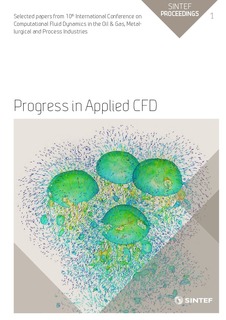Modelling of particle transport and bed-formation in pipelines
| dc.contributor.author | Narayanan, C. | |
| dc.contributor.author | Gupta, S. | |
| dc.contributor.author | Lakehal, D. | |
| dc.date.accessioned | 2017-11-08T08:52:26Z | |
| dc.date.available | 2017-11-08T08:52:26Z | |
| dc.date.issued | 2015 | |
| dc.identifier.isbn | 978-82-536-1433-5 | |
| dc.identifier.isbn | 978-82-536-1432-8 | |
| dc.identifier.issn | 2387-4295 | |
| dc.identifier.uri | http://hdl.handle.net/11250/2464809 | |
| dc.description.abstract | Particle transport and bed formation in gas and condensate pipelines could occur under various flow regimes, from dilute flows to high mass-loading conditions, to conditions where particle beds form in the pipeline. Proper modelling requires a comprehensive approach that can handle all the different regimes. A range of complex phenomena have to be accounted for, including turbulence of the carrier phase, particle-turbulence and particle-wall interactions, surface roughness effects, particle-particle interactions, particle agglomeration, deposition, saltation and re-suspension. We present here recent results of TransAT’s particle transport predictions to conditions of one-way, two-way and four-way particle-flow coupling, spanning the three flow regimes evoked: (i) dilute suspensions, (ii) high mass-loading conditions, and (iii) particle beds in the pipeline. | nb_NO |
| dc.language.iso | eng | nb_NO |
| dc.publisher | SINTEF Academic Press | nb_NO |
| dc.relation.ispartof | Selected papers from 10th International Conference on Computational Fluid Dynamics in the Oil & Gas, Metallurgical and Process Industries | |
| dc.relation.ispartofseries | SINTEF Proceedings;1 | |
| dc.subject | Two-phase flow | nb_NO |
| dc.subject | Euler-Lagrange method | nb_NO |
| dc.subject | Black bowder | nb_NO |
| dc.subject | Four-way coupling | nb_NO |
| dc.subject | VLES | nb_NO |
| dc.subject | LES | nb_NO |
| dc.title | Modelling of particle transport and bed-formation in pipelines | nb_NO |
| dc.type | Chapter | nb_NO |
| dc.description.version | publishedVersion | nb_NO |
| dc.rights.holder | © 2015 SINTEF Academic Press | nb_NO |
| dc.subject.nsi | VDP::Technology: 500 | nb_NO |
Tilhørende fil(er)
Denne innførselen finnes i følgende samling(er)
-
SINTEF Proceedings [402]
